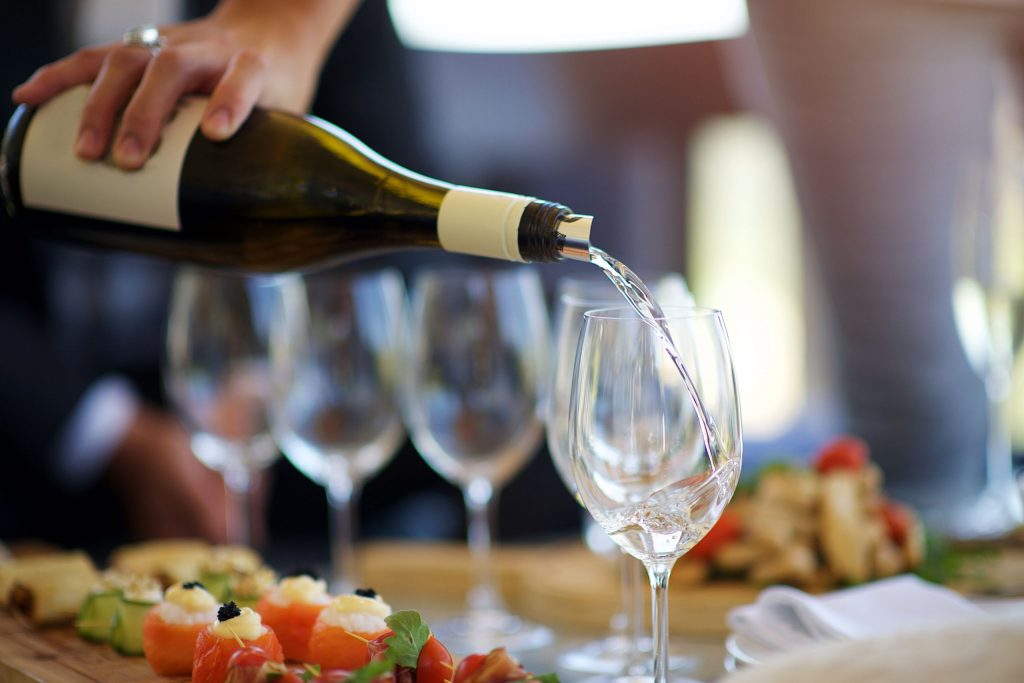
Mastering Wine And Food Pairing: A Guide To Flawless Matches
Food and wine matching is a method for balancing tastes, textures, and scents to enhance dining experiences. The right wine could highlight the nuances of a cuisine, turning an ordinary supper into a memorable occasion. Imagine enjoying a rich, velvety red with a great steak where the tannins cut across the meat’s amazing smells. On the other hand, a clean white may accentuate the freshness of both components, thereby awakening the tastes of a delicate seafood meal. Learning this technique requires knowing basic ideas such sweetness, acidity, and wine body. The body of a wine affects its mouthfeel; acidity brings brightness and balance; sweetness may soften strong notes. Understanding these principles allows anybody to create ideal combinations that surprise and excite the taste, therefore transforming a daily dining experience into a fantastic culinary journey. Whether you know nothing about wine or are a professional, the subject of wine matching lets you explore new sides of taste and pleasure.
Understanding Wine Profiles and Food Textures
Knowing the features of the wine—such as body, acidity, and tannins—helps you greatly enhance your dining experience when choosing wine to go with food. For a wine, for example, its body describes its weight and fullness in your tongue. A Cabernet Sauvignon, a full-bodied wine, goes well with rich, heavy meals like a succulent steak. The strong character of the wine balances the richness of the meat thus improving the dish as well as the wine.
Wine matching also depends much on tannins and acidity. Higher acidity wines, such as a crisp Sauvignon Blanc, may provide a cool counterpoint to greener dishes. Imagine drinking this zesty wine with fried calamari or creamy risotto; the acidity slices through the richness, giving every mouthful and sip light and energizing effect. Conversely, tannins in red wines, including those in a medium-bodied Syrah, complement foods with earthy tastes, such roasted root vegetables. The tannins accentuate a wonderful complexity and mellow the earthy flavors by interacting with the texture of the meal. Combining these qualities guarantees that the wine enhances your dinner and generates unforgettable events on your table.

Balancing Sweetness and Spiciness
Because they serve to balance the heat and stop the tastes from becoming overpowering, sweet wines are great friends for spicy foods. A spicy meal may cause the heat to accentuate the flavor of alcohol and tannins in traditional wines, therefore rendering them rather harsh. Still, sweet wines such as Riesling or Gewürztraminer provide a good counterpoint. The sweetness of these wines complements their spiciness, therefore improving the taste sensation.
For a great harmony, for example, mix a relatively sweet Riesling with hot Asian cuisine. The sweet taste of the wine cools down the heat, thereby enhancing the flavors of the food; its fruish and floral overtones make every bite and drink more delightful. The careful link enables you to enjoy the complex tastes of the dish and the wine without one dominating the other. So, choose a sweet white wine to improve your dining experience the next evening you are having a hot dinner!
Playing with Regional Matches
Matching wine with cuisine from the same area usually results in a natural harmony that accentuates the enjoyment of meals. This notion derives from the thought that the traditional meals of an area have developed with the wines made there, producing wonderfully complementary tastes. For example, you are savoring a generational celebration when you have a traditional Italian Chianti with a pasta meal—especially one with a tomato-based sauce. The Chianti’s strong acidity accentuates the tomato sauce’s richness, therefore harmonizing the whole eating experience.
Likewise take into account the link between French Burgundy and coq au vin. Both come from the same area, hence this combination accentuates the richness and depth of tastes. The earthy aromas in the Pinot Noir from Burgundy mirror the savory components of the meal, thereby harmonizing tastes. Selecting wines and dishes from the same area helps you to access a legacy that has perfected the art of balance, thus completing and fulfilling your dinner. Therefore, consider combining regional wines with regional cuisine for a great gastronomic journey next time you are cooking a dinner!
Pairing with Bold Flavors
The secret to matching wine with rich, savory foods like red meat or barbecue is to balance the intensity of the cuisine with the suitable wine. Often the go-to pick for these filling dinners are full-bodied reds like Cabernet Sauvignon. Strong tannins and flavors in Cabernet Sauvignon help to counter the richness of red meat, therefore enhancing the complete dinner experience. Think of the wine as the perfect dance partner; it emphasizes food flavors and balances the fat and richness.
Strong structure and depth of full-bodied reds contribute to explain their great performance. Cabernet Sauvignon’s restrained spiciness and dark berry tastes, for instance, would match the savory smells of a well-cooked steak or the smokiness of barbecue. This harmony lets the food and wine blossom on your taste in a wonderful balance. Thus, get a full-bodied red whether you are having a nice supper at home or a backyard BBQ. It is the ideal combination to transform your dinner from average to exceptional!
Experimenting with Unconventional Matches
Regarding food and wine matching, don’t hesitate to violate the conventional wisdom! Wine matching is beautiful in the delight of discovery; hence, why not try sparkling wine with fried chicken? The fresh bubbles in sparkling wine cut through the richness of the fried chicken to provide a wonderful contrast that improves both tastes. Likewise, with a standard slice of pizza, a cold rosé may be pretty pleasant. Although the acidity of the rosé balances the richness of the cheese, its fruish undertones highlight the savory toppings. These odd combinations will wow your taste and enhance your dining experience!
Investigating odd pairings not only offers a world of flavors but also provides your meal a lively edge. Combining ideas and departing from the traditional red-with- red and white-with- white rules may expose startling flavor dynamics within your taste receptors. The next time you’re cooking supper, embrace the unexpected—grab a bottle of something bold and combine it with your favorite comfort dish. It will astound you how these unexpected combinations might provide amazing dining experiences!

Final Thought
Discovering the ideal wine and dinner combinations is an interesting trip combining creativity with history. Though conventional ideas provide a firm basis—like combining full-bodied reds with rich meals or crisp whites with lighter cuisine—there is considerable satisfaction in breaking from the conventions and finding personal tastes. Encouragement of experimentation helps individuals discover unique combinations that satisfy their taste receptors, therefore transforming every meal into an amazing experience. Thus, embrace the process of wine matching, depend on your taste, and enjoy the excitement of finding your own favored matches. To the exploration of flavors!




